Virtual Environments
Data is displayed for academic year: 2023./2024.
Laboratory exercises
Course Description
Virtual Environment: introduction, definitions, virtual scene, components of the virtual scene, modeling the virtual scene.
Graphics Processing Unit, programmable graphics pipeline.
Rendering special effects: generalized texture mapping, texture filtering, alpha, light, gloss, reflection and bump mapping, other texture mapping methods; fuzzy rendering effects, reflections, shadows, billboard techniques, other effects.
Rendering accelleration: polygon reduction, selective culling, level of detail techniques, optimal polygonal structures, scene organization and state changes.
Networked virtual environments: applications, technical challenges, scalability, network connectivity architectures, virtual space structuring, traffic types and protovols for NVEs, example NVE systems, virtual worlds, digital games.
Virtual reality: definition, principles, development, VR device types, input devices, natural 3D vision, simulated 3D vision, visual, audio, haptic and other output devices, design and programming of VR systems.
Augmented reality: definition, characteristics, applications, optical and video mixing, projection systems, comparisons of different image mixing techniques, registration, tracking, registration errors, sensing, mobile augmented reality.
Data visualization. Scientific visualization.
Study Programmes
University graduate
[FER3-HR] Audio Technologies and Electroacoustics - profile
Elective Courses
(1. semester)
(3. semester)
[FER3-HR] Communication and Space Technologies - profile
Elective Courses
(1. semester)
(3. semester)
[FER3-HR] Computational Modelling in Engineering - profile
Elective Courses
(1. semester)
(3. semester)
[FER3-HR] Computer Engineering - profile
Elective Courses
(1. semester)
(3. semester)
[FER3-HR] Computer Science - profile
Elective Courses
(1. semester)
(3. semester)
[FER3-HR] Control Systems and Robotics - profile
Elective Courses
(1. semester)
(3. semester)
[FER3-HR] Data Science - profile
Elective Courses
(1. semester)
(3. semester)
[FER3-HR] Electrical Power Engineering - profile
Elective Courses
(1. semester)
(3. semester)
[FER3-HR] Electric Machines, Drives and Automation - profile
Elective Courses
(1. semester)
(3. semester)
[FER3-HR] Electronic and Computer Engineering - profile
Elective Courses
(1. semester)
(3. semester)
[FER3-HR] Electronics - profile
Elective Courses
(1. semester)
(3. semester)
[FER3-HR] Information and Communication Engineering - profile
Elective Courses
(1. semester)
(3. semester)
Elective Courses of the Profile
(1. semester)
Elective Coursesof the Profile
(3. semester)
[FER3-HR] Network Science - profile
Elective Courses
(1. semester)
(3. semester)
Elective Courses of the Profile
(1. semester)
(3. semester)
[FER3-HR] Software Engineering and Information Systems - profile
Elective Courses
(1. semester)
(3. semester)
[FER2-HR] Computer Engineering - profile
Recommended elective courses
(3. semester)
[FER2-HR] Computer Science - profile
Recommended elective courses
(3. semester)
[FER2-HR] Information Processing - profile
Recommended elective courses
(3. semester)
[FER2-HR] Software Engineering and Information Systems - profile
Recommended elective courses
(3. semester)
[FER2-HR] Telecommunication and Informatics - profile
Specialization Course
(1. semester)
(3. semester)
Learning Outcomes
- define the concept of virtual environment
- use the functions of a GPU
- develop solutions applying advanced virtual environments
- develop 3D graphics applications on various platforms
- apply knowledge in complex projects involving virtual environments
- plan and lead smaller projects
Forms of Teaching
Lectures
Two live lectures per week
Independent assignmentsProjects: group work, presentation
LaboratoryAssignments can be performed independently
Grading Method
| Continuous Assessment | Exam | |||||
|---|---|---|---|---|---|---|
| Type | Threshold | Percent of Grade | Threshold | Percent of Grade | ||
| Laboratory Exercises | 0 % | 20 % | 0 % | 20 % | ||
| Class participation | 0 % | 6 % | 0 % | 6 % | ||
| Seminar/Project | 0 % | 20 % | 0 % | 20 % | ||
| Mid Term Exam: Written | 0 % | 32 % | 0 % | |||
| Final Exam: Written | 0 % | 32 % | ||||
| Exam: Written | 0 % | 64 % | ||||
Comment:
The possible number of points is 110 due to the optional nature of the project.
Week by Week Schedule
- Virtual environments introduction and applications.
- Real-time rendering pipeline; Rendering pipeline on graphics processing unit (GPU).
- Real-time rendering pipeline; Rendering pipeline on graphics processing unit (GPU).
- Special effects.
- Special effects.
- Acceleration.
- Acceleration.
- Midterm exam
- Midterm exam
- Networked virtual environments. Virtual worlds. Digital games.
- Virtual reality. Augmented reality. Virtual humans.
- Visualization of 2D/3D scalar fields (color mapping, isosurfaces). Direct volume data rendering (ray-casting, transfer functions, segmentation). Visualization of vector fields and flow data.
- High-dimensional data (dimension reduction, parallel coordinates). Evaluation of visualization methods. Applications of visualization.
- Project
- Project
Literature
(.), Igor S. Pandžić, Tomislav Pejša, Krešimir Matković, Hrvoje Benko, Aleksandra Čereković, Maja Matijašević (2011.), Virtualna okruženja: Interaktivna 3D grafika i njene primjene, Element Zagreb, Manualia Universitatis Studiorum Zagrabiensis,
(.), Tomas Akenine-Möller, Eric Haines, Naty Hoffman (2008.), Real-Time Rendering, third edition, A.K.Peters Ltd,
For students
General
ID 240747
Winter semester
5 ECTS
L1 English Level
L1 e-Learning
30 Lectures
5 Seminar
0 Exercises
10 Laboratory exercises
0 Project laboratory
0 Physical education excercises
Grading System
90 Excellent
75 Very Good
65 Good
55 Sufficient


 Pristupačnost
Pristupačnost




